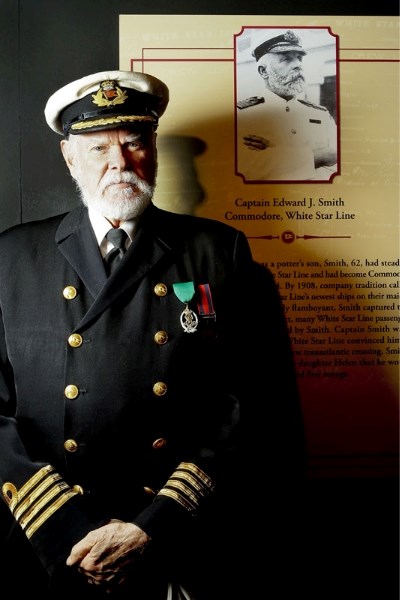The Titanic was the largest luxury liner of its time, a passenger steamship promoted as unsinkable.
Yet when an iceberg torpedoed its maiden voyage on April 15, 1912 about 640 kilometres south of Newfoundland’s Grand Banks, causing the largest maritime disaster on record, it stunned the world.
Nearly a century later, the fascination continues as the Telus World of Science hosts Titanic: The Artifact Exhibition, opening Oct. 8 and running until Feb. 2012.
The exhibit features nearly 200 artifacts divided into seven galleries. The focus is on telling Titanic’s human stories through genuine artifacts and recreating the ship’s interior of a third-class compartment and boiler room.
Visitors to the exhibit receive a replica boarding pass with the name of a real Titanic passenger, the passenger’s class, destination and with whom they travelled. At the end of the exhibit is a memorial board listing all the passengers’ names and whether or not they survived.
Both educational and emotional, the exhibition is a chronological journey from the ship’s construction in Ireland to life on board and finally the ill-fated sinking and deaths of 1,517 people. There were 2,223 people on board.
“It’s an incredible story. It has all the elements of a Greek tragedy. I don’t think someone could write a story like this. The hubris of man – to say the ship was unsinkable was a bold claim and not true. People at that time also had an infallible trust in modern technology and they were clearly rocked with the sinking of Titanic,” says Theresa Nelson, spokesperson for RMS Titanic Inc.
RMS Titanic Inc., a salvaging company, owns the rights to recover artifacts for research purposes from a five-kilometre debris field surrounding Titanic’s broken hull. It is prohibited from retrieving anything on the actual ship.
Since 1987, the company has recovered and conserved more than 5,500 artifacts. The artifacts on display at Telus – pieces of ship, furniture, dinnerware and personal items – range anywhere from cellphone-size steel rivets and a wrench with a head the size of a chocolate cake to a crumpled leather suitcase containing intact postage stamps and postcards.
Perhaps the most engrossing area is the passenger gallery, where authentic dinnerware from White Star Lines shows the differences in the three passenger classes. While first class passengers dined on filet mignon and lamb with mint sauce, third class passengers downed roast pork and green peas.
The gallery also features a marble sink that once had hot and cold running water, a broken silver chocolate pot and a twisted gilded wall sconce.
Some of the recovered artifacts are broken. None have been repaired. They are only conserved, explains Nelson.
“We want them to wear the face of the tragedy they’ve endured,” she says.
Also accompanying the exhibition is Lowell Lytle, one of 150 people who has seen the Titanic resting on its seabed about four kilometres below sea level.
An actor and former rock musician, Lytle has an uncanny resemblance to Titanic’s Capt. Edward J. Smith.
Hired to recreate Smith’s character at the Orlando Titanic exhibit, Lytle persuaded the salvors-in-possession to include him on a fishing expedition. The submarine was 28 feet long, however three men including Lytle were crammed into a six-foot space, standing room only, for 12 hours.
“It was like three men sitting in the front seat of a Volkswagen,” laughs the six-foot four-inch actor.
But after championing regularly for a berth on the sub, his reaction to skirting the ocean floor was a bit surprising.
“I felt strange, out of place and very lonely. I saw debris and realized 1,500 people never made it. It was eerie.”
After his dive, the trio brought up a suitcase with a neatly fold suit, vest, underwear, socks, pen and a lighter.
“It was like looking at a man’s soul. You wondered who it belonged to,” he said.
Lytle has played the captain’s role for several years and has developed an encyclopaedic knowledge of the Titanic. But it is people that intrigue him.
“The story is so fascinating. You have a variety of people thrown together on the world’s biggest ship and they meet at a climactic moment and have two hours to decide what to do.”
Ticket prices range from $9 to $33. For more information visit www.edmontonscience.com.




